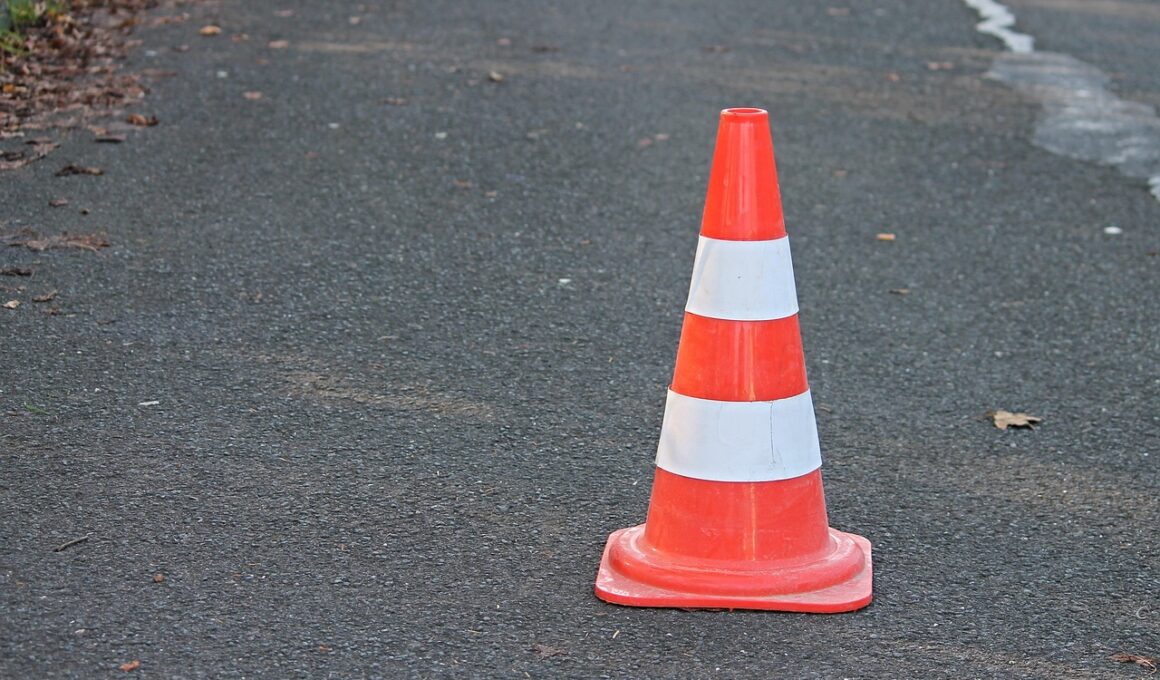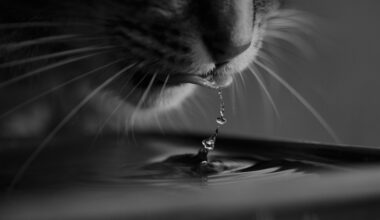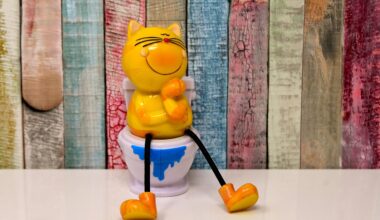Training Cones and Poles: Building Agility and Speed
When it comes to increasing your dog’s agility and speed, training cones and poles are essential equipment. These items can help develop your dog’s coordination and improve their speed. A well-trained dog can navigate courses with ease and precision. Additionally, using training cones and poles will provide a solid base for your dog’s overall fitness and health. Training sessions are enjoyable and mentally stimulating for dogs, fostering a stronger bond between you and your furry friend. Start by selecting the right equipment suitable for your dog’s size and training level. Look for durable cones that withstand outdoor use and are visible in various conditions. Poles should be lightweight yet sturdy enough for frequent use. Incorporate different exercise routines using these accessories as obstacles. This will not only enhance your dog’s agility skills, but also build confidence in their abilities. Consistency and patience during these sessions are vital. Always reward your dog’s effort with praise and treats, ensuring they remain excited about training. Explore various techniques such as weaving and jumping through hurdles using a combination of cones and poles to maximize their speed and agility skills.
Training with cones and poles brings numerous benefits to your dog’s fitness regime. Engaging in these activities helps improve balance, coordination, and flexibility. Healthier dogs lead happier lives, making agility training a rewarding experience for both owner and pet. To achieve optimal results, design a structured training routine that combines fun with focus. Begin with simple drills using three cones spaced evenly apart. This will help your dog learn to turn and accelerate effectively. As they progress, you can gradually increase the difficulty by adding more cones and poles to the course. Make sure to observe your dog’s behavior during training sessions. If your dog seems stressed or disinterested, take a break and redirect their attention with toys or treats. Incorporating playfulness into the routine can create a positive environment for learning. Additionally, consider working with a professional trainer if needed, as they can offer specialized guidance and techniques tailored to your dog’s unique needs. Engaging in regular agility training sessions not only enhances their skills but also strengthens the bond you share with your canine companion. Don’t forget that consistency and encouragement are key factors in making agility training enjoyable.
Setting Up a Training Course
Creating a training course with cones and poles at your home or local park is an excellent way to maximize your dog’s agility training. Begin by selecting a spacious area where you can set up various obstacles without interruptions. Consider using both cones and poles to design diverse courses. Start simple: arrange cones in a straight line or a circle, allowing your dog to practice navigating through them. Use poles to create additional challenges, such as jumps or weaving exercises. Remember to place each item securely in the ground to prevent them from toppling over during training. As your dog becomes more skilled, modify the setup by changing the distance and angles between the cones and poles. This variety is crucial in keeping their experience stimulating and challenging. Always ensure that the course height is appropriate for your dog’s size and physical capabilities. Monitoring your dog’s progress will help you tweak the course progressively. This encourages development and promotes exciting training sessions. Finally, use cones and poles creatively to train your dog for specific activities or competitions, advancing their skills to a professional level over time.
Consistency and routine are essential for effective training. Establish a regular schedule for agility training with your dog, ideally two to three times per week. This routine allows your dog to feel comfortable with the training and fosters enhanced learning. Always begin sessions with a warm-up to prevent injuries. Activities like gentle running or light stretching can help prepare your dog for the tasks ahead. Incorporate agility drills after the warm-ups, paying special attention to their performance as you progress through the training course. Observe closely and adjust the difficulty according to their comfort level. It’s important to celebrate small successes throughout the training sessions. Offering praise and rewards, such as treats and words of encouragement, reinforces positive behavior and motivates your dog to do better. Be patient; each dog learns at their own speed, and pushing them too hard can lead to stress or injury. Regular practice alongside sufficient rest days will lead to a balanced training approach. Enhancing your dog’s agility and speed takes time, commitment, and understanding. Emphasize fun over competition to keep your dog excited to participate in training.
Using Rewards Effectively
Rewards play a crucial role in making agility training enjoyable for dogs. Using positive reinforcement is more effective than punitive measures. When your dog successfully navigates through cones or jumps over poles, offer immediate praise or treats to reinforce their accomplishment. The excitement encourages them to repeat the behavior, solidifying the learning experience. Keep a variety of high-value treats handy to maintain their focus throughout training sessions. The use of toys can also motivate your dog to engage in the training activities. Pairing a fun game, such as a chase or tug of war, with agility drills will make sessions more dynamic and enjoyable for your pet. To prevent your dog from losing interest, frequently switch up rewards and offer them in different orders, so they maintain curiosity about the next challenge. By making agility training a fun and rewarding experience, your dog will be more likely to look forward to each session. Remember, consistency in rewarding positive behavior will drive future success. Over time, your dog will associate agility training with positive feelings, leading to stronger performance and increased enthusiasm during practice.
Safety should always be prioritized during agility training sessions. Make sure that the training area is free from hazards or distractions that could harm your dog. Keep an eye on your dog’s behavior and physical condition throughout the exercise; if they appear tired or overheated, allow for breaks and incorporate water regularly. Also, use training equipment that is appropriate for your dog’s size and skill level, adjusting heights and distances according to their capabilities. Ensuring that your dog wears a properly fitted harness and leash can help maintain control during training sessions. Using cones and poles might seem straightforward, but it’s essential to follow best practices to avoid accidents. Ideal surfaces for practicing agility include grass or soft ground, which can help prevent injuries. If training outdoors, be mindful of varying weather conditions, as extreme heat or cold can affect your dog’s performance. Always seek veterinary advice before starting an agility training program if your dog has pre-existing health issues. Prioritizing safety creates a positive learning environment, which is crucial for your dog’s well-being and enjoyable training experience.
Conclusion: Embrace Agility Training
In conclusion, incorporating training cones and poles into your dog’s agility exercises can significantly enhance their speed and coordination. With proper setup, training techniques, and engaging rewards, you will refine their skills while promoting a strong bond between you and your pet. An effective routine not only boosts their performance but also nurtures their confidence and happiness. As you design challenging courses, always remain adaptable to your dog’s needs, encouraging their natural curiosity and enthusiasm. Remember to prioritize safety and maintain a positive environment throughout your training sessions. The journey of agility training is one of growth and joy for both you and your dog. As you witness their progress, celebrate each achievement, no matter how small. Keep evolving your training methods by researching new techniques or observing experienced trainers. These efforts will further enrich your dog’s learning and overall agility experience. Embrace this incredible journey of agility training, where both owner and dog can reach new heights together, forging lasting bonds and achieving great heights in performance. Enjoy every moment of this adventure, as it transforms both your dog and yourself into more confident and skilled partners.
Agility training utilizing cones and poles is not just a means of improving speed but also a fantastic bonding opportunity. Engaging in these activities with your dog will bring years of happiness and fulfillment. As you embark on this adventure, appreciate the time spent together and the progress made along the way. Teaching your dog new skills will foster trust and strengthen your connection. This essential training equipment will become a valuable part of your shared journey. With patience and commitment, both you and your dog can enjoy fantastic results from agility training, unlocking their true potential while having fun. Invest in quality equipment that suits your training objectives and challenges your dog appropriately. Consider leaning into local agility clubs for community support and learning opportunities as you embark on this journey. Importantly, make sure both you and your furry friend are having fun along the way, as this transforms training from a chore into an enjoyable adventure. Harness the magic of agility training with your dog and embrace the bond formed through patience and shared achievements. Take every step together, discovering the joy of agility.


